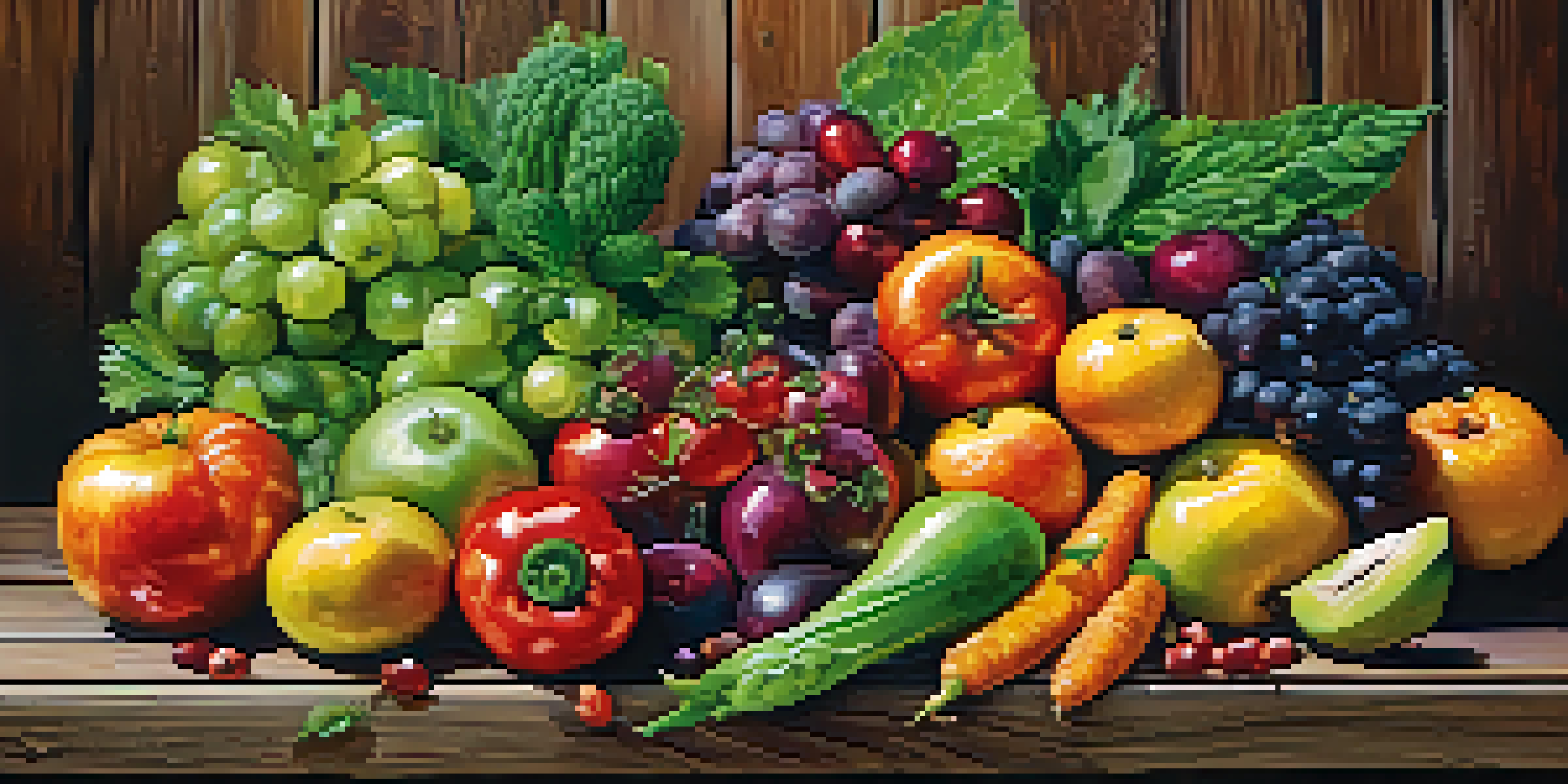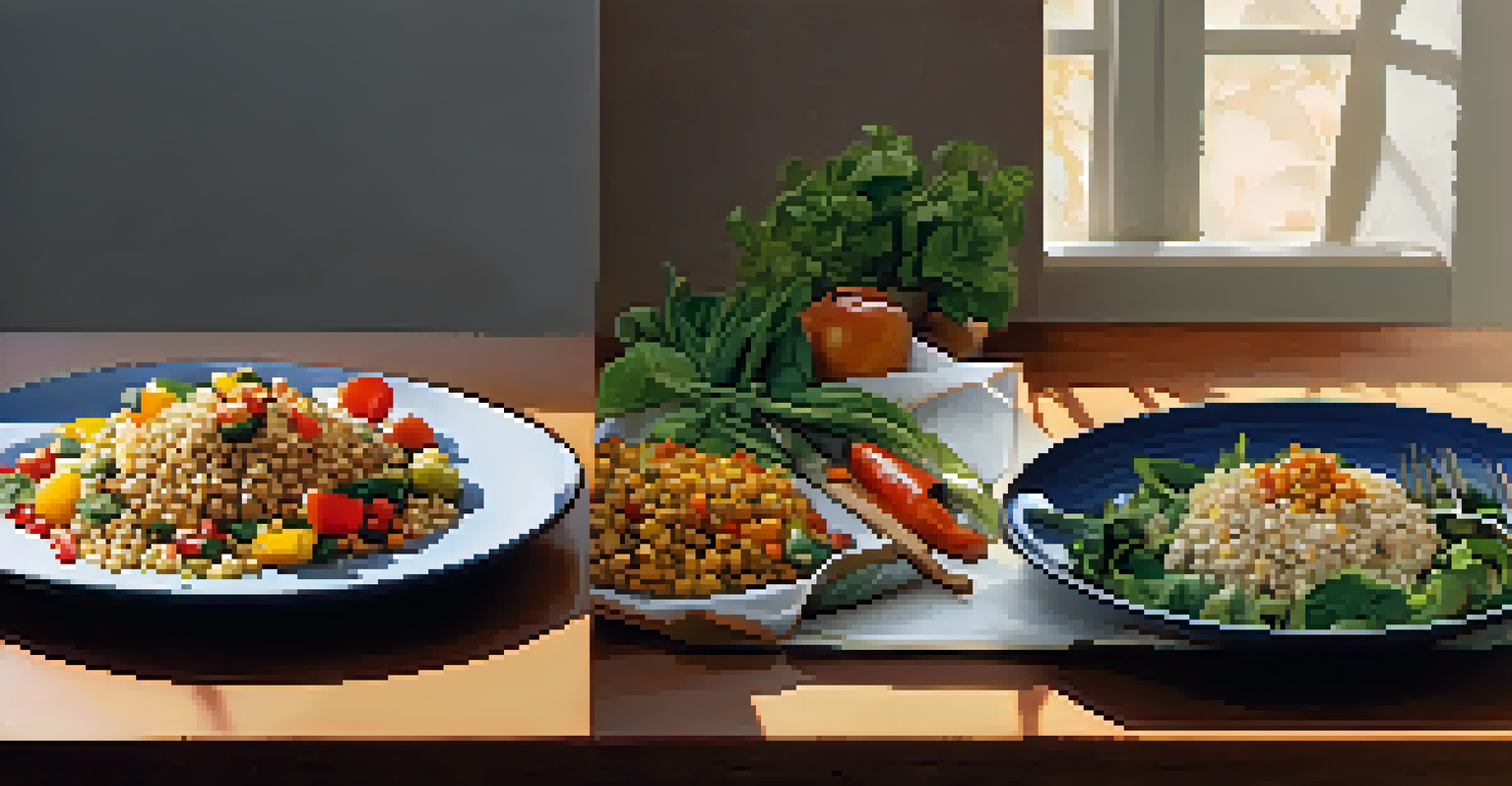The Raw Food Diet and Aging: Myths About Longevity

Understanding the Raw Food Diet Basics
The raw food diet primarily consists of uncooked, unprocessed foods, focusing heavily on fruits, vegetables, nuts, and seeds. Advocates believe that cooking food diminishes its nutritional value and enzymes essential for health. This diet is often praised for its potential to enhance energy levels and promote weight loss. However, it’s important to recognize that not all raw foods are nutritionally equal, and balance is key.
Let food be thy medicine and medicine be thy food.
For instance, while raw vegetables are nutrient-rich, certain foods like legumes and grains can be harmful if not cooked properly. Cooking can help break down anti-nutrients and make some foods more digestible. Thus, understanding the nuances of the raw food diet is crucial before diving in.
Ultimately, while the raw food diet can be beneficial for some, it’s essential to approach it with knowledge and caution to ensure a well-rounded intake of nutrients.
Myth: Raw Food Guarantees Longevity
One of the most popular myths surrounding the raw food diet is the belief that it guarantees a longer life. While it’s true that a diet rich in fruits and vegetables is linked to better health outcomes, longevity is influenced by various factors beyond diet. Genetics, lifestyle choices, and environmental factors all play significant roles in determining lifespan.

For instance, consider the Blue Zones—regions where people live significantly longer than average. Their diets are diverse and not strictly raw, often incorporating cooked foods, fermented items, and healthy fats. This suggests that a balanced approach, rather than an exclusive diet, may be more effective for longevity.
Raw Diet Needs Balanced Approach
A successful raw food diet requires understanding nutritional needs and incorporating both raw and cooked foods for optimal health.
In summary, while a raw food diet can contribute to a healthier lifestyle, it’s not a magic bullet for extending life. A holistic approach to health is essential.
Myth: Raw Foods Are Always Healthier
Another common misconception is that raw foods are always healthier than their cooked counterparts. While raw foods retain certain vitamins and enzymes, cooking can enhance the bioavailability of others. For example, cooking tomatoes increases the availability of lycopene, an antioxidant linked to many health benefits.
The food you eat can be either the safest and most powerful form of medicine or the slowest form of poison.
Moreover, some raw foods can harbor harmful bacteria or toxins that cooking eliminates. Think about potatoes; when consumed raw, they contain solanine, a toxic compound. Cooking not only makes them safer but also more palatable and easier to digest.
Therefore, it’s crucial to consider the context of food preparation. Rather than adhering strictly to raw, a balanced diet that includes both raw and cooked foods may offer the best of both worlds.
Understanding Nutritional Needs as We Age
As we age, our bodies undergo various changes that can affect our nutritional needs. For instance, older adults may require more protein to maintain muscle mass and strength. A raw food diet, which is often lower in protein, may not meet these needs adequately.
In addition, certain vitamins and minerals, such as B12 and iron, are more readily available in animal products. This can pose a challenge for strict raw food followers who avoid these sources. Addressing these nutritional gaps is vital for maintaining health and vitality in later years.
Myths About Raw Food Debunked
Common misconceptions about raw food diets, such as guaranteed longevity and universal health benefits, highlight the importance of a holistic perspective on nutrition.
Thus, it’s essential to listen to your body and adjust your diet to support your changing needs, rather than strictly adhering to one dietary philosophy.
The Role of Lifestyle in Healthy Aging
Healthy aging goes beyond just diet; it encompasses various lifestyle factors. Regular physical activity, sufficient sleep, and stress management are critical components that contribute to overall well-being. A raw food diet might be one aspect of a healthy lifestyle, but it should not overshadow the importance of these other factors.
For example, engaging in social activities and maintaining strong relationships have been linked to better health outcomes and longevity. These lifestyle factors can often yield more significant results than dietary changes alone.
Ultimately, a holistic approach that includes a balanced diet, physical activity, and social engagement will provide a more comprehensive framework for healthy aging.
The Importance of Individualized Nutrition
Nutrition is not a one-size-fits-all approach, especially as we age. Each individual's body responds differently to various diets, including the raw food diet. Factors like personal health history, lifestyle, and genetic makeup can all influence how a diet affects an individual.
For instance, someone with a history of digestive issues may find that a high-fiber raw diet exacerbates their symptoms. On the other hand, another person may thrive on a raw food regimen. This variability underscores the importance of personalizing dietary choices to align with unique health needs.
Individual Needs Shape Nutrition
Personal health histories and lifestyle factors necessitate individualized dietary choices, as not everyone thrives on a raw food regimen.
Listening to your body and consulting with healthcare professionals can help create a tailored approach that supports your health goals.
Finding Balance: Raw vs. Cooked Foods
Striking a balance between raw and cooked foods may be the key to optimizing health and longevity. Each type of food offers unique benefits that contribute to overall nutritional intake. For instance, incorporating a variety of both raw fruits and vegetables alongside cooked grains and proteins can create a more comprehensive nutrient profile.
Moreover, this balance allows for greater culinary diversity, making meals more enjoyable and less monotonous. Adding cooked foods can also make it easier to meet specific dietary needs, especially as we age.

In essence, embracing both raw and cooked foods can lead to a more satisfying and healthful eating experience, promoting longevity and well-being.